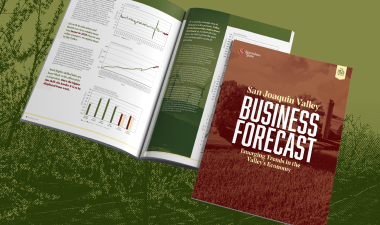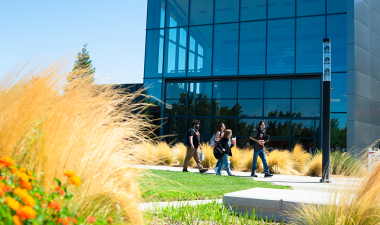A pending Federal Reserve rake hike, combined with new governmental measures relating to agriculture, will slow economic growth in the Central Valley through 2017 and possibly beyond. That outlook is according to the biannual Business Forecast Report produced by Gökçe Soydemir, the Foster Farms Endowed Professor of Business Economics at Stanislaus State.
Read the Business Forecast Report
According to Soydemir, the new legislation requiring farmers to pay overtime, the additional state-mandated water measures proposed for the Valley and fresh regulations on greenhouse gas emissions tied to dairy cows and landfills will slow the Valley’s largely farm-based economy.
Here are some of the highlights of the report:
EMPLOYMENT
The San Joaquin Valley’s 2016 total employment growth of 1.56 percent came quite close to the historical average of 1.72 percent (excluding the recessionary years) but slowed from the 2015 growth rate as a result of the ongoing impact of the drought. Total employment appears poised to revert back to the typical average yearly growth rate of about 1.23 percent through 2018.
- HOUSING MARKET
Growth in home values in 2017 should decrease slightly, a projection based on the Federal Reserve’s pending rate hike. The total number of housing permits issued in the Valley grew less in 2016. The slowed growth of new homes being built contributed to a supply shortage, further increasing the value of existing homes.
- THE DOLLAR AND INFLATION
The stronger dollar, combined with the absence of cost-push factors to keep inflation at very low rates, allowed weekly wages to keep pace with inflation in the first half of 2016. For the first time since 2010, labor force growth caught up with employment growth, pointing to an influx of labor to the Valley and a saturated labor market.
- BANKING
Foreclosure filings continued to fall and refinancing activity increased due to falling long-term interest rates. Valley net loans and leases continued to grow together with bank deposits, although the growth was slightly slower compared to previous years.
The biannual Business Forecast Report provides projections for the Valley's labor market, regional housing conditions, prices and inflation, banks and other depositary institutions and capital markets. Soydemir and his team use a unique forecasting model that produces lower and upper statistical confidence bands, with results that are expected to fall within this range.
Soydemir joined Stanislaus State as the Foster Farms Endowed Professor of Business Economics in 2011. He brings strong expertise and experience in business analysis and forecasting and has published extensively on applied econometrics, regional economics, financial forecasting, market analysis and international finance.


